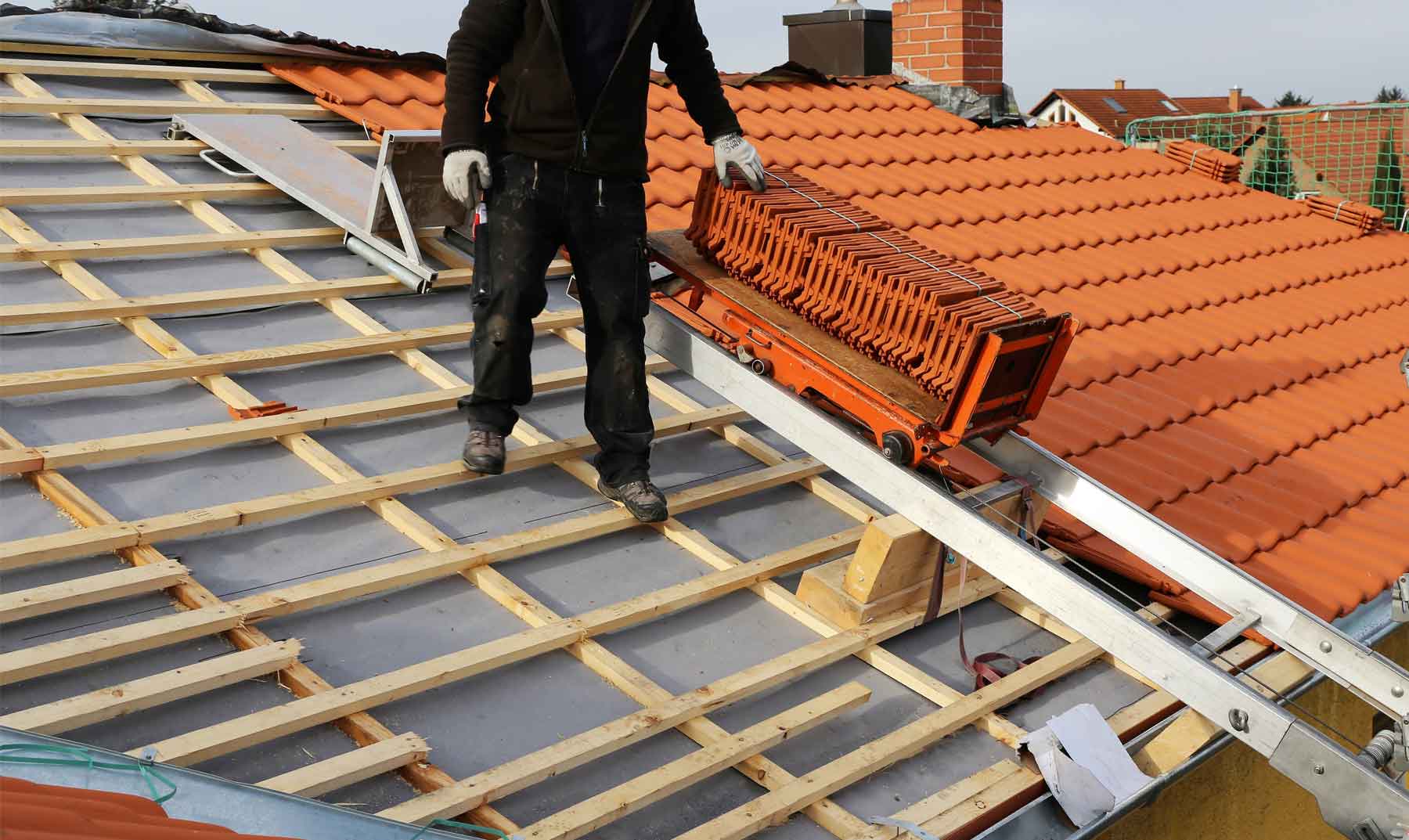
If your roof has been damaged and you are in need of a roof replacement, you may be wondering how to get your insurance to cover the costs. Dealing with insurance companies can be a complex process, but with the right information and approach, you can increase your chances of having your roof replacement covered. In this blog post, we will discuss the steps you can take to get insurance to pay for your roof replacement.
Understanding Your Insurance Policy
Embarking on the journey to get your roof replacement covered by insurance begins with a deep dive into your insurance policy. This step is crucial as it lays the foundation for your entire claim process. Insurance policies can be intricate documents filled with jargon that might seem confusing at first glance. Your policy details not only the types of damage covered but also those which are excluded from coverage. This distinction is vital because it directly affects your eligibility for filing a successful claim.
- For example, while your policy may offer comprehensive coverage for damages stemming from natural disasters like hurricanes or hailstorms, it might not extend the same generosity towards wear and tear caused over time or poor maintenance. Additionally, some policies implement a depreciation factor on your roof based on its age and material, which can influence the reimbursement amount you’re entitled to.
- It’s also beneficial to pay attention to any deductibles that apply, as this is the amount you’ll be responsible for paying out-of-pocket before your insurance kicks in. Knowing your deductible ahead of time can help you financially plan for the roof replacement process.
- Moreover, understanding any specific procedures your insurance company requires for filing a claim, such as deadlines or necessary documentation, will streamline the process and prevent any potential hiccups. If your policy’s particulars seem overwhelming or unclear, don’t hesitate to reach out to your insurance agent for clarification. Their expertise can provide you with insights into your policy’s coverage scope and guide you through the nuances of filing your claim effectively.
Documenting the Damage
To ensure your insurance claim for a roof replacement is as strong as possible, detailed documentation of the roof damage is imperative. Begin by taking comprehensive photos and videos that clearly show the extent of the damage from various angles and distances. This visual evidence should capture both the overall damage and zoom in on specific areas where the damage is most severe.
- In addition to photographic evidence, compiling written records is equally crucial. If your roof has been inspected by roofing professionals or contractors, secure a copy of their reports or assessments. These documents often provide an expert opinion on the damage, which can lend credibility to your claim. They might also include estimated repair or replacement costs, which can be invaluable when negotiating with your insurance company.
- Gather any receipts or records of previous repairs to the roof. This information can demonstrate ongoing maintenance efforts and clarify that the current damage was not due to neglect. Keeping a log of dates and descriptions of significant weather events that could have contributed to the damage can also be supportive evidence for your claim.
- Remember, the goal of this documentation is to create a clear and undeniable record of the damage for your insurance company. By presenting a well-documented case, you make it easier for the adjuster to understand the extent of the damage, thereby facilitating a smoother claim process. This step is about building a comprehensive, fact-based narrative that substantiates your need for a Roof Replacement, setting the stage for a successful insurance claim.
Filing Your Insurance Claim
When it’s time to file your insurance claim for a roof replacement, initiating contact with your insurance provider promptly is crucial. Reach out via the company’s preferred method, whether that’s online, through their app, or over the phone, to inform them of the damage and your intent to file a claim. Provide a concise yet comprehensive overview of the damage, underscoring the events leading to it, such as a specific storm or incident. This initial report sets the stage for your claim and alerts your insurance company to the situation.
- At this stage, it’s essential to gather and submit all previously collected documentation that supports your claim. This includes the detailed photos and videos of the damage, reports from roofing professionals or contractors, and any relevant weather reports or historical repair receipts. Organize this information logically, making it easily accessible for the insurance representative.
- Be ready to fill out any required claim forms with accuracy and detail. Providing incomplete or inaccurate information can delay the process or impact the outcome of your claim. Your insurance company may also request additional information or documentation as they review your claim, so maintaining open lines of communication is important.
- Once your claim is filed, keep a record of all correspondence with your insurance company, including emails, letters, and summaries of phone conversations. This documentation can be invaluable if there are any disputes or misunderstandings during the claims process. Being proactive, thorough, and organized can significantly expedite your claim and help ensure a fair assessment of your roof’s damage.
Preparing for the Insurance Adjuster’s Visit
As the insurance adjuster’s visit approaches, your preparation can significantly impact the outcome of your claim. It’s imperative to have all your documentation neatly organized and ready to present. This includes photos and videos of the damage, detailed reports from roofing professionals, receipts for any repairs made in the past, and any records of severe weather events that might have caused the damage. This evidence will be crucial in supporting your claim and demonstrating the extent of the damage to the adjuster.
- Additionally, prepare a list of questions or concerns you have regarding the damage assessment and the coverage process. This proactive step ensures you don’t forget to address any crucial points during the visit. If there have been any temporary repairs made to prevent further damage, be sure to point these out to the adjuster and have documentation for these repairs on hand as well.
- It may also be beneficial to have a roofing contractor you trust present during the adjuster’s visit. A knowledgeable contractor can provide expert insights on the damage and the necessary repairs or replacement, potentially adding weight to your claim. Their expertise can help ensure the adjuster’s assessment is thorough and accurate.
- Remember, the adjuster’s visit is a critical step in the claims process. Showing that you are well-informed and organized can make a positive impression and help the adjuster understand the full scope of the damage. By being fully prepared, you advocate effectively for your claim, moving one step closer to securing the insurance coverage for your roof replacement.
Understanding the Claims Adjustment Process
Navigating the claims adjustment process requires a clear grasp. How the insurance company evaluates the damage and determines your coverage eligibility. This critical phase involves the insurance adjuster’s analysis based on the documentation you’ve provided. Their on-site assessment, and any relevant policy guidelines. The adjuster’s report will outline the extent of the damage. The recommended repairs or replacement, and an estimate of the costs involved.
- It’s essential to review the adjuster’s findings meticulously. Confirm that all damage has been accurately accounted for and that the proposed settlement aligns with your expectations based on the policy coverage. If there are discrepancies in the evaluation or you believe certain damages have been overlooked, it’s crucial to address these concerns immediately. Provide additional evidence or documentation to support your claim if necessary.
- Understanding the rationale behind the insurance company’s decision can also illuminate. Potential areas for negotiation, especially if the coverage offered falls short of the actual repair or replacement costs. Engage in open dialogue with the adjuster or a company representative to discuss your concerns and seek clarification on any points of confusion. This process is not just about accepting a decision passively but involves active participation to ensure that the coverage you receive is both fair and adequate, reflecting the true cost of returning your roof to its pre-damage condition.
Negotiating with Your Insurance Company
Negotiating with your insurance company might seem daunting, but it’s an essential step if the offered settlement doesn’t fully cover the necessary roof replacement costs. Begin this process by compiling a detailed comparison of the adjuster’s estimate against quotes and assessments from independent roofing professionals. These independent evaluations often reveal a more accurate reflection of the repair or replacement costs, providing a stronger basis for your negotiation.
- It’s important to communicate your findings clearly and assertively to the insurance company. Highlighting any discrepancies between the adjuster’s report and the independent estimates. Be prepare to explain why these additional costs are necessary and justifi, backing up your argument with specific examples from the documentation you’ve gather.
- Sometimes, insurance companies may initially offer a lower settlement as part of their standard operating procedure. Don’t be discouraged by this. Instead, view it as a starting point for discussions. Requesting a reassessment or a second opinion from another adjuster within the company can also be beneficial.
- Keep all communication with your insurance company professional and persistent. If your efforts to negotiate don’t yield the desired outcome, consider seeking. The assistance of a public adjuster who specializes in handling insurance claims on behalf of homeowners. Although they charge a fee, their expertise in claim negotiation can result in a significantly. Better settlement than what you might achieve on your own.
- Remember, the goal of negotiation is to secure the appropriate funding to restore your roof to its pre-damage condition, ensuring your home remains safe and protected. Engaging in informed, respectful dialogue with your insurance provider can lead to a favorable resolution that meets your needs.
Hiring a Roofing Contractor
Selecting the right roofing contractor is a pivotal step in the roof replacement. Process, ensuring that the project is complete efficiently and effectively. Start by seeking recommendations from friends, family, or neighbors who have had similar work done. Online reviews and ratings on reputable trade websites can also provide. Valuable insights into the reliability and quality of potential contractors.
- Before making a commitment, it’s important to verify that the contractor holds the necessary licenses and insurance to operate legally in your state. This protects you from liability in case of accidents or damage during the project. Additionally, ask for references from recent projects to gauge the contractor’s workmanship and customer service.
- Once you have narrowed down your choices, request detailed quotes from multiple contractors for comparison. These quotes should include a breakdown of all costs, such as labor, materials, and any additional fees. A thorough discussion about the materials to be use, the timeline for completion, and the payment schedule is also crucial. This conversation will clarify the expectations and deliverables for both parties.
- Finally, ensure that your agreement with the contractor is formalize in a written contract. This document should cover the project’s scope, timelines, costs, and any warranties or guarantees. A solid contract provides a clear framework for the project and helps prevent misunderstandings or disputes down the line.
Conclusion
Navigating the process to secure insurance coverage for a roof replacement involves diligence and strategic preparation. From the initial review of your insurance policy to the meticulous documentation of damage. And thorough negotiation with your insurance company, every step is crucial. Effective communication and a proactive approach are key to a smooth claims process. Once your efforts result in the approval of your claim, choosing a reputable roofing contractor becomes your next critical task. Ensuring the actual replacement work aligns with the high standards your home deserves. Throughout this journey, patience and detailed attention to each phase can significantly enhance. Your likelihood of obtaining the necessary funds for a roof replacement. By following the outlined steps and maintaining a proactive stance. You can facilitate a successful outcome, ultimately securing your home’s safety and integrity with a new roof.






One Comment